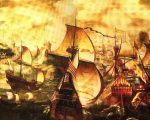
As it’s the anniversary of the Spanish Armada at the moment, I thought it was time to test your knowledge on this famous Tudor event. How much do you know about it? Test yourself with this fun quiz. Good luck!
[Read More...]
As it’s the anniversary of the Spanish Armada at the moment, I thought it was time to test your knowledge on this famous Tudor event. How much do you know about it? Test yourself with this fun quiz. Good luck!
[Read More...]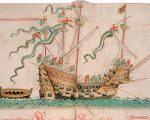
hanks to those who came into the chatroom on Friday for our live chat session with Philip Roberts. There were lots of questions about the Mary Rose and it was a very productive discussion.
[Read More...]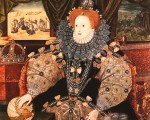
On 30th July 1588, the day after the Battle of Gravelines and the defeat of the Spanish Armada, the wind changed and the remaining ships of the Spanish Armada were forced northwards and scattered. It really did seem that the elements, particularly the wind, were on England’s side. Sir Francis Drake wrote to Sir Francis Walsingham on 30th July 1588, saying “There was never anything pleased me better than seeing the enemy flying with a southerly wind northward. We have the Spaniards before us, and the mind, with the grace of God, to wrestle a pull with them.”
[Read More...]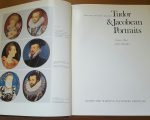
You can never have enough books, can you? Well, that’s what I keep telling myself anyway! In today’s Claire Chats video I share with you my most recent book purchase, the two volume Tudor and Jacobean Portraits by Roy Strong (1969), which I’ve had my eye on for ages. I know I will be dipping into these volumes on a regular basis, so I’m very pleased with my purchase, plus they’re beautiful books.
[Read More...]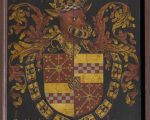
The name “Anne of Cleves” conjures up thoughts of Henry VIII’s allegedly unattractive, unfashionable fourth wife. However, over the span of almost 200 years, there were five women known as “Anne of Cleves”. First, we will meet Anne of Burgundy, who by marriage became an Anne of Cleves. For purposes of this article, we will refer to her as “van Kleef.” Next, we will meet the daughter of Johann II of Cleves, aunt to the famous Henry VIII’s fourth wife. We will call her “von Cleve” throughout this article. Finally, we will quickly look into the early life of Anne of Cleves, the most well-known to the English-speaking world.
[Read More...]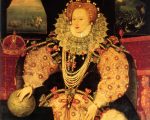
The Art fund has just announced that its public appeal, along with a £7.4 million grant from the Heritage Lottery Fund, has enabled Royal Museums Greenwich to buy the Elizabeth I Armada portrait, thus saving it from disappearing into a private collection or moving abroad. Yay! I’m so pleased by this and thank you to all those who donated to the appeal.
[Read More...]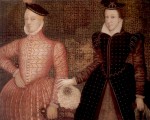
On 29th July 1565, Mary, Queen of Scots, married Henry Stuart (Stewart), Lord Darnley, at Holyrood Palace (the Palace of Holyroodhouse), Edinburgh.
You can find out all about Mary, Queen of Scots, at our Mary, Queen of Scots Bio page, but who was the bridegroom? Here are a few facts about him:
[Read More...]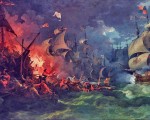
In 1588, the day after the English had wrecked the crescent formation of the Spanish Armada and caused havoc, they attacked the Spanish fleet. This battle is known as the Battle of Gravelines because it took place just off the port of Gravelines, a Spanish stronghold in Flanders.
[Read More...]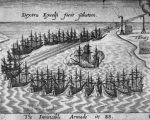
At midnight on 28th July 1588, five hell-burners were ordered to be sent amongst the galleons of the Spanish Armada at Calais. Hell-burners were fire-ships, ships that were packed with wood and pitch and set alight. The high winds at Calais caused an inferno which resulted in complete chaos and the Armada’s crescent formation was wrecked as galleons scattered in panic.
[Read More...]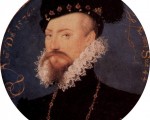
On this day in history, the 27th July 1588, Robert Dudley, the Earl of Leicester and the Lieutenant and Captain General of the Queen’s Armies and Companies, invited Elizabeth I to visit Tilbury, where he was busy assembling troops. If you read my post from yesterday, you will know that 4,000 men had been assembled at Tilbury Fort on 26th July 1588 to guard the eastern approach to London from the expected invasion by the Spanish Armada.
[Read More...]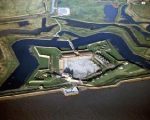
On this day in history, the 26th July 1588, 4,000 men assembled at Tilbury Fort, the fort built on the Thames estuary in Essex by Elizabeth’s father, Henry VIII, to guard the eastern approach to London from the expected invasion by the Spanish Armada.
[Read More...]
This month we travel a little further back in the Tudor period to look at the early Tudors… We have an article by Leanda de Lisle on Owen Tudor, and a day-by-day build-up to the Battle of Bosworth by Debra Bayani, along with other excellent articles by a whole host of historians and authors.
[Read More...]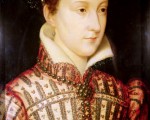
On 24th July 1567, Mary, Queen of Scots, who was imprisoned at Lochleven Castle and who had recently suffered a miscarriage, was forced to abdicate. The Scottish crown was passed on to her one-year-old son, James, who became James VI of Scotland, with his uncle, Mary’s illegitimate half-brother, James Stewart, Earl of Moray, acting as regent.
[Read More...]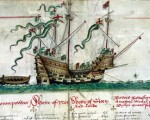
As this week saw the grand opening of The Mary Rose museum following a six-month closure for work, and this month’s expert talk by Philip Roberts is on The Mary Rose, I thought it was only fitting to test your knowledge of Henry VIII’s flagship. Good Luck!
[Read More...]
In today’s Claire Chats video I discuss whether Lady Jane Grey should actually be called Queen Jane.
[Read More...]
As part of this month’s Mary Rose feature, with our guest speaker Philip Roberts (author of “The Mary Rose in a Nutshell), we have this wonderful video showing some behind-the-scenes footage of the ship and its treasure trove of finds.
[Read More...]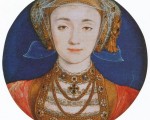
Yesterday was the anniversary of the death of Anne of Cleves on 16th July 1557, so I thought it would be good to mark the occasion with an Anne of Cleves themed quiz. How much do you know about this Tudor queen consort? Test yourself with this fun quiz.
[Read More...]
As 13th July was the anniversary of John Dee’s birth in 1527, I thought I’d give an overview of the life and career of this fascinating Tudor man, a well as recommend some books on him. I hope you find the video interesting and useful.
[Read More...]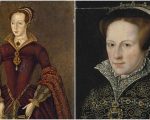
Lady Jane Grey had been chosen by Edward VI as his heir and became queen on his death on 6th July 1553. However, Edward’s half-sister Mary believed herself to be Edward’s true heir and so declared herself queen at her home at Kenninghall following news of Edward’s death. On 12th July 1553, Mary moved from Kenninghall to Framlingham Castle, where she began to rally support and between 12th and 15th July Mary’s supporters and forces grew. She was supported by men such as Sir Edward Hastings; Henry Radclyffe, Earl of Sussex; Sir Thomas Cornwallis; Thomas, Lord Wentworth; Sir Henry Bedingfield; John de Vere, Earl of Oxford; and many prominent families of eastern England such as the Rochesters, the Jerninghams and Waldegraves. Mary was proclaimed Queen in various counties and towns.
[Read More...]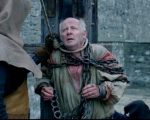
On this day in history, 12th July 1537, Robert Aske, lawyer and rebel, was hanged in chains outside Clifford’s Tower, the keep of York Castle. Aske was one of the leaders of the rebels in the 1536 northern uprising known as the Pilgrimage of Grace – click here to see a Pilgrimage of Grace timeline and here to read an article on the rebellion.
Being hanged in chains was an awful way to die. Those executed this way were usually hanged alive in chains – rather than being hanged first in the usual manner and then put in chains on display – and took several days to die, being slowly suffocated to death. Horrible!
[Read More...]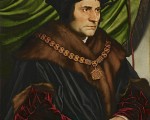
How much do you know about this prominent Tudor man, a man who served King Henry VIII loyally but who ended his days on the block? Test your knowledge with this fun quiz.
[Read More...]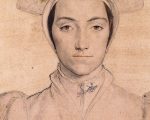
After just over six months of marriage, on 9 July 1540, Anna von Kleve, more commonly known as Anne of Cleves, was divorced from Henry VIII of England. As part of her reward for acquiescing so easily to Henry’s request, she would forever after be known in England as the Daughter of Cleves and Henry’s sister, though she signed letters to her brother as “Anna, born Duchess of Cleves,” or a variation thereof.
Anna was gifted many properties, including Chelsea and Hever Castle, the childhood home of Anne Boleyn. Anna maintained a relationship not only with Henry but also with his daughters Mary and Elizabeth. Anna would go on to live the rest of her life in England before dying at the age of 41. She never returned to the Holy Roman Empire, parts of which comprised most of what we know today as Germany.
[Read More...]
In today’s Claire Chats video I take you on a tour through the “Tudor life” section of my bookcase, picking out the books I find useful on everyday life during the period.
[Read More...]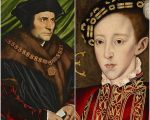
On this day in history, two important Tudors died: Sir Thomas More was beheaded on 6th July 1535 for high treason for denying the King’s supremacy, and fifteen year-old King Edward VI died on 6th July 1553 of natural causes at Greenwich Palace.
[Read More...]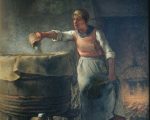
This quiz should be nice and easy if you listened to my recent Claire Chats video on cleaning and doing the washing in Tudor times. Good luck!
[Read More...]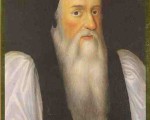
On this day in history, 2nd July 1489, one of my favourite Tudor personalities, Archbishop Thomas Cranmer, was born in Aslockton, Nottinghamshire.
Cranmer had a major impact on Tudor England. Not only did he provide Henry VIII with the annulment of his first marriage to Catherine of Aragon, he was also a key player in the English Reformation, and, of course, he was burnt at the stake for his faith in the reign of Queen Mary I.
[Read More...]